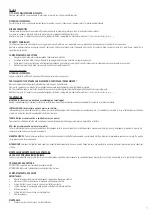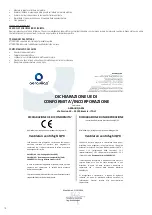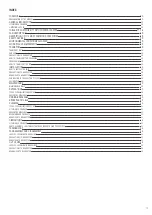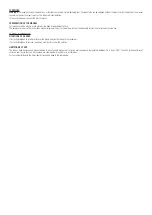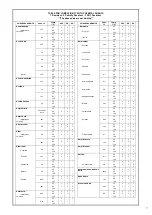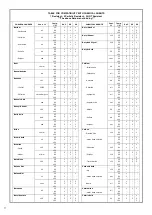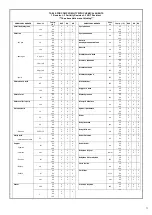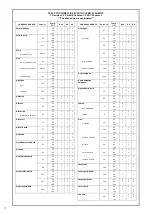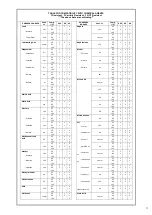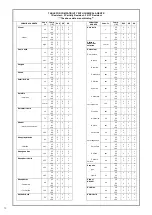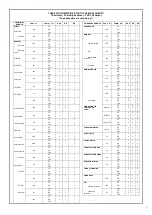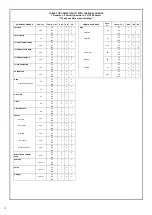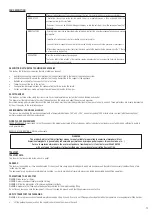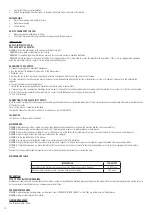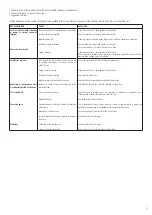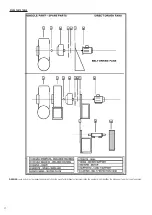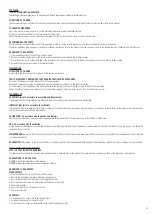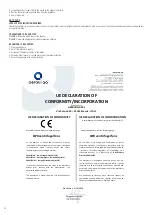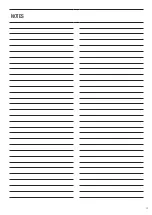
31
• The description of the problem that is the most probable symptom of malfunction;
• The possible cause or causes of damage;
• Suggested solutions;
Finding breakages can be carried out by expert and qualified technical maintenance personnel, who know the machine and the risks connected to it.
PROBLEM FOUND
CAUSE
SOLUTIONS
Lack of capacity (with reduction
of power at normal speed of
rotation)
Eccessive air capacity
Tubes obstructed and/o aspiration points obstructed.
Direction of rotation inverted
Impeller obstructed
Insufficient speed of rotation
Speed of rotation
Clean tubes and hood, check position of the shutters.
Check connection of winding on motor terminal box.
Clean the impeller using the apposite door hatch when the appliance is shut down.
Check voltage and connect the clamps of the motor.
Check transmission, check that the belts do not slide.
Clean tubes and hood, check position of the shutters.
Check direction of rotation; check conditions of turbulence at aspiration; check speed of
motor rotation, voltage, defects in winding.
Insufficient pressure
Reduction of performance after
a satisfactory period of operation
Start up difficult
Excessive noise
Vibrations
Loss of air in the duct system or badly constructed
or installed components , or bypass shutters not
perfectly shut.
Speed of rotation too low
Direction of rotation inverted
Impeller partially blocked and/or damaged
Leakage in volute casings and/or leakage in the
aspiration tubes
Excessive power absorption
Reduced voltage
Elevated number of rotations to obtain the required
performance
Break down of the bearings
Incorrect impeller balancing or impeller scraping on
the volute
Unbalance of the rotating parts
Support structure not suitable
Check the system and substitute the faulty components.
Clean tubes and hood, check position of the shutters
Check electric connection
Check position of assembly and condition of the impeller
Substitute the gaskets and verify the condition of channeling
Check direction of rotation; check the conditions of turbulence at aspiration; check
rotation speed of the motor, voltage, winding defects
Check the data on the motor plate
Use of soundproof systems and/or silencers; choose an appliance with a bigger size
equal to the performance or an appliance with minor peripheral speed
Check bearing wear (in particular for the airtight ones )
Check balancing of the impeller
Check impeller balancing again
Add weights to the structure to make it more stable
Summary of Contents for QPX
Page 2: ...2 ...
Page 35: ...35 NOTES ...

